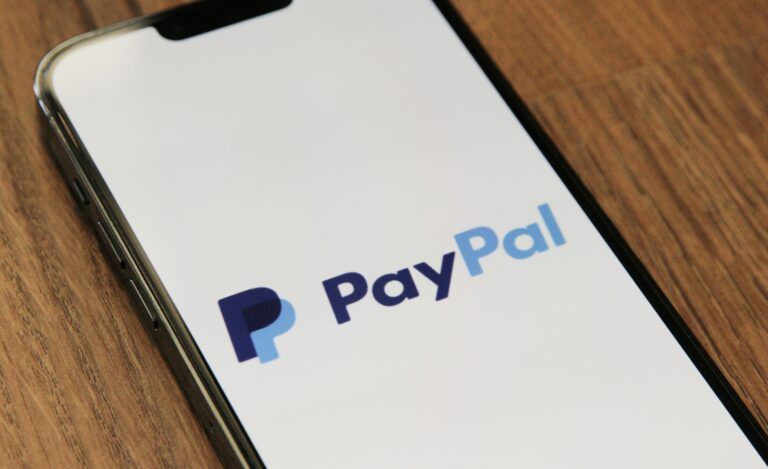Choosing the right payment processor can make or break your business. Two giants stand out in this arena: Stripe and PayPal. These powerhouses have revolutionized online payments, making it easier than ever for businesses to accept money from customers worldwide and for customers to pay in a flash. But which one should you choose—or should you choose neither?
Both platforms offer robust features, but they cater to different needs and come with their own sets of advantages and drawbacks. So, let’s cut through the noise and get down to the nitty-gritty of Stripe vs PayPal.
Stripe: Pros and Cons
Pros
Developer-Friendly Platform: Stripe offers an extensive API and comprehensive documentation, empowering developers to create custom payment solutions with ease. This flexibility allows businesses to tailor the payment experience to their specific needs.
Global Reach: With support for over 135 currencies, Stripe enables businesses to expand internationally without hassle. This global capability opens up new markets and revenue streams for growing companies.
Robust Security Features: Stripe, albeit a bit trigger happy, has strong fraud and security measures. Features are both built-in and offered as add-ons via the Stripe plugin store. These protections safeguard sensitive customer data and help businesses maintain PCI DSS compliance.
Seamless Integration: Stripe integrates effortlessly with numerous e-commerce platforms, allowing businesses to quickly set up and start processing payments. This ease of integration reduces implementation time and costs.
Transparent Pricing: Stripe maintains a straightforward fee structure, offering a flat-rate model for all transactions so merchants never have to question how much they pay per transaction.
Comprehensive Features: Stripe offers a wide array of features, including subscription management, fraud prevention tools, and customizable checkout experiences. These tools help businesses streamline operations and improve customer experiences.
Cons
Higher Transaction Fees: While competitive, Stripe’s fees can accumulate quickly for businesses processing a high volume of transactions. This cost factor may impact profitability for some merchants.
Risk of Account Freezes: Stripe may freeze funds or suspend accounts if it detects suspicious activity or violations of its terms of service. This risk can cause significant disruptions for businesses, particularly those in high-risk industries.
Limited Support for High-Risk Industries: Stripe maintains strict policies regarding the types of businesses it supports, which may pose challenges for merchants in certain sectors.
Learning Curve: Despite its developer-friendly approach, integrating Stripe into complex systems may require a learning period for some businesses.
Chargeback Fees: Stripe charges fees for chargebacks, which can impact businesses that face a high number of disputes.
Limited Customer Support: Many users report experiencing delays in customer support responses, which can be frustrating during urgent issues.
PayPal: Pros and Cons
Pros
Brand Recognition: PayPal boasts widespread consumer recognition. This familiarity often leads to higher conversion rates, as customers feel more comfortable completing transactions through a known platform.
User-Friendly Interface: PayPal offers a straightforward, intuitive interface that makes it easy for both merchants and customers to navigate. This simplicity reduces friction in the checkout process and can lead to fewer abandoned carts.
Diverse Payment Options: PayPal supports various payment methods, including credit cards, debit cards, bank transfers, and PayPal balances. This flexibility caters to a wide range of customer preferences, potentially increasing sales.
Global Reach: With operations in over 200 countries and support for 25 currencies, PayPal facilitates international transactions effortlessly. This global presence enables businesses to expand their customer base worldwide.
Buyer and Seller Protection: PayPal offers robust protection policies for both buyers and sellers, which can help reduce the risk of fraudulent transactions.
Mobile Optimization: PayPal’s mobile-friendly solutions, including its One Touch feature, streamline the checkout process on smartphones and tablets, catering to the growing mobile commerce market.
Cons
Higher Fees: PayPal’s fee structure can be more expensive compared to many alternatives, especially for businesses processing high volumes. These costs can eat into profit margins over time.
Account Limitations: PayPal may impose sudden account limitations or holds on funds if it detects unusual activity. These actions can disrupt cash flow and cause significant inconvenience for businesses.
Less Customization: While PayPal offers some customization options, it provides less flexibility in terms of branding and integration compared to more developer-focused platforms like Stripe.
Encourages Use of PayPal Balance: PayPal often prioritizes payments from user balances, which can delay fund availability for merchants compared to direct credit card transactions.
Complex Fee Structure: PayPal’s varied fee structure, which differs based on transaction type and country, can be confusing for some users to navigate and predict costs accurately.
Potential for Disputes: The buyer protection policy, while beneficial for consumers, can sometimes be exploited, leading to an increased risk of chargebacks and disputes for merchants.
DON’T OVERPAY FOR PROCESSING POWER
Pricing Comparison
Stripe’s Fee Structure
Stripe maintains a straightforward pricing model with some additional fees for specific services:
Standard Rates: Stripe charges 2.9% + $0.30 per transaction for most online payments.
Volume-Based Discounts: Businesses processing over $1 million annually can qualify for custom pricing, potentially lowering their overall costs (after an extended and risky sign up process).
International Transactions: Stripe adds a 1% fee for international cards and a 3% fee for currency conversion.
PayPal’s Fee Structure
PayPal offers a similar base rate but includes options for different transaction types:
Standard Rates: Like Stripe, PayPal charges 2.9% + $0.30 per transaction for most online payments.
Micropayments: For transactions under $10, PayPal offers a rate of 5% + $0.05 per transaction, which can benefit businesses dealing with numerous small purchases.
International Transactions: PayPal charges 4.4% plus a fixed fee based on the currency for cross-border transactions.
Additional Considerations
Both platforms have extra fees that businesses should factor into their decision:
Currency Conversion: Stripe charges a flat 3% for currency conversion, while PayPal’s fees vary.
Refunds: PayPal may charge fees for refunds in certain cases, which can impact businesses with high return rates.
When comparing these pricing structures, businesses should consider their typical transaction sizes, volume, and international sales.
It’s important to note that while the base rates are identical, the additional fees and options can significantly impact the total cost. Businesses should calculate their expected transaction mix to determine which platform offers the most cost-effective solution for their specific needs.
Remember, pricing shouldn’t be the only factor in your decision. Consider the features, integration capabilities, and overall fit for your business model when choosing between Stripe and PayPal.
STOP OVERPAYING FOR PAYMENT PROCESSING
What Is a Payment Aggregator
Let’s clear up a common misconception. Many business owners assume that Stripe and PayPal function as traditional merchant accounts, but this isn’t the case. Both platforms operate as payment aggregators, also known as payment service providers (PSPs) or third-party processors.
Payment aggregators simplify the process of accepting online payments. They pool multiple merchants under a single, shared merchant account. This approach allows businesses to start processing payments quickly, without the need for individual underwriting or a dedicated merchant account.
Stripe and PayPal leverage this model to offer rapid onboarding and simplified setup processes. When you sign up with either platform, you’re essentially piggybacking on their master merchant account. This arrangement brings both advantages and potential drawbacks.
On the plus side, payment aggregators make it easy for businesses of all sizes to start accepting payments online. You can typically set up an account and begin processing transactions within minutes, rather than days or weeks. They also handle much of the backend complexity, including PCI compliance and fraud prevention.
However, this convenience comes at a cost. Payment aggregators often charge higher fees than traditional merchant accounts. They also exercise more control over your funds and may implement sudden holds or account freezes if they detect suspicious activity. This stems from their need to manage risk across their entire merchant pool.
Understanding this fundamental difference between payment aggregators and merchant accounts is crucial. It shapes the pricing structures, risk policies, and overall user experience you can expect from both Stripe and PayPal.
Best Use Cases
While Stripe and PayPal offer robust payment processing solutions, savvy businesses recognize the importance of diversifying their payment stack. Implementing a multi-processor strategy can significantly enhance your payment infrastructure’s reliability and flexibility.
Benefits of a Dedicated Merchant Account
A dedicated merchant account should serve as your primary payment processing solution, especially for high-volume or high-risk businesses. Dedicated merchant accounts offer:
- Lower processing fees for high-volume transactions
- More stable account relationships with fewer freezes or terminations
- Customized solutions tailored to your business needs
- Direct communication with underwriters for issue resolution
Leveraging Stripe and PayPal as Backup Options
By integrating Stripe and PayPal alongside your primary merchant account, you create a robust payment ecosystem:
- Ensure Business Continuity: Route a portion of your transactions through Stripe or PayPal to maintain cash flow if your primary processor experiences issues.
- Expand Payment Options: Utilize Stripe and PayPal to offer customers additional payment methods, enhancing their checkout experience.
- Optimize for Specific Transactions: Use Stripe for its developer-friendly features or PayPal for its widespread consumer recognition in certain scenarios.
- Mitigate Risk: Spread your transaction volume across multiple processors to reduce the impact of potential account freezes or terminations.
- Enhance Fraud Prevention: Implement multiple layers of fraud detection by leveraging the unique security features of each platform.
Implementing a Multi-Processor Strategy
To effectively use Stripe and PayPal as backup processors:
- Set up automatic failover systems to redirect transactions if your primary processor goes down.
- Use smart routing to direct transactions to the most cost-effective or reliable processor based on transaction type, amount, or customer location.
- Regularly review and optimize your payment stack to ensure you’re maximizing the benefits of each platform.
By diversifying your payment acceptance strategy, you not only reduce risk but also gain a competitive advantage. This approach allows you to cater to a wider consumer base, potentially boosting sales and expanding your market reach.
Remember, the key to a successful multi-processor strategy lies in careful implementation and ongoing optimization. Regularly assess your payment stack’s performance and adjust your strategy to align with your business’s evolving needs and the dynamic payment landscape.









